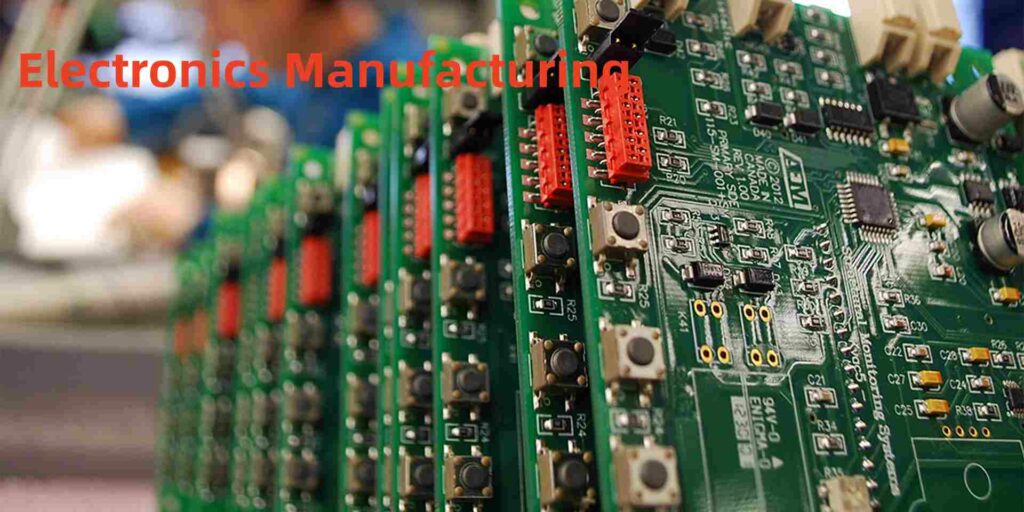Introduction
EMS stands for Electronics Manufacturing Services. In the manufacturing industry, EMS providers are companies that design, assemble, produce and test electronic components and systems for OEMs (Original Equipment Manufacturers).
The roles performed by EMS companies typically include:
- PCB Assembly
- Product Testing
- Parts Sourcing
- Supply Chain Management
- Manufacturing Engineering
- Product Lifecycle Management
- Repair and Return Services
By outsourcing production to an EMS provider, OEMs can focus on their core competencies like product development and marketing while leveraging the EMS expertise in manufacturing processes, global facilities, and the flexible capacity required in electronics.
This article provides an overview of EMS manufacturing capabilities, key services, pros and cons of outsourcing, certification standards, and the world’s major EMS companies. Gaining a better understanding of the strategic role EMS providers play in electronics production will help you evaluate options as you scale up new products.
EMS Manufacturing Capabilities

The core expertise of EMS companies lies in the complex processes required to assemble and test electronic boards and systems at volume:
PCB Assembly
- SMT assembly of surface mount components onto PCBs
- Automated optical inspection (AOI)
- Through-hole device insertion
- Conformal coating
- Manual touch-up and repair
Product Testing
- In-circuit test (ICT)
- Flying probe electrical validation
- Functional test and burn-in
- Environmental stress screening
Component Sourcing
- Bill of materials (BOM) optimization
- Procurement of parts from approved vendors
- Vendor qualification and quality audits
- Counterfeit part prevention
- Inventory management and buffer stock
System Integration and Validation
- Configuring sub-assemblies into enclosures
- Interconnecting PCBs, power supplies, wiring
- Product-level functionality and reliability testing
These core assembly, test and sourcing capabilities enable manufacturing a wide range of electronics efficiently for OEM customers.
Key EMS Services Provided
In addition to production capabilities, EMS companies offer a host of value-added services to support OEMs:
Manufacturing Engineering
- Evaluating product designs for manufacturability
- Providing design for manufacturing (DFM) feedback
- Developing assembly and test processes and fixtures
- Assisting with cost reduction and optimization
Supply Chain Management
- Managing a network of globally qualified parts suppliers
- Coordinating purchasing and logistics across facilities
- Inventory buffering and demand smoothing
- Supply continuity plans including dual/multi sourcing
Product Lifecycle Management
- Version control and change management
- Managing BOMs and configuration consistency
- Responding rapidly to engineering changes
- Obsolescence monitoring and lifetime buys
Repair and Return Services
- Warranty and post-sales support services
- Diagnostics, troubleshooting and repair
- Managing return material authorizations (RMAs)
NPI and Prototyping
- Developing assembly processes for new product introduction (NPI)
- Building engineering prototypes and pilot runs
- Transitioning products from development to volume production
This combination of manufacturing capabilities and supporting services allows EMS providers to offer comprehensive build-to-order solutions on behalf of OEM customers.
Pros and Cons of Outsourcing to EMS

Electronics OEMs choose whether to manufacture in-house or outsource production based on strategic priorities. Below are some key considerations when evaluating using EMS:
Pros of outsourcing to EMS:
- Avoid large capital investments in facilities and automation
- Leverage skilled manufacturing engineering expertise
- Gain flexible, variable capacity as volumes fluctuate
- Improve focus on core product development competencies
- Potentially reduce labor costs due to EMS scale
Cons of outsourcing to EMS:
- Loss of complete process control and visibility
- Requires alignment on quality standards
- Dependency on EMS supply continuity and financial health
- Longer development time if contracting later stage
- Potential IP risk from external production
OEMs analyze these tradeoffs to determine the optimal make vs. buy balance for their products and business model. Rather than a binary choice, most OEMs leverage a mix of in-house and outsourced manufacturing tailored to each product line or business unit.
EMS Industry Standards
To provide confidence in EMS providers, the industry established certification standards administered by the EMS Industry Association:
- EMS Industry Association (EMSIA) – Global trade association representing EMS companies and suppliers
Key EMS certification standards:
- IPC-1791 – Trusted Electronics Supplier Assessment – Covers process and infrastructure capabilities, employee competence, continuous improvement and more across EMS providers to validate competence.
- R2 – Responsible Recycling – Focuses on environmentally responsible recycling and management of electronic waste including repair, reuse and material recovery.
- ANSI/ESD S20.20 – Certifies robust ESD (electrostatic discharge) prevention procedures and controls in the factory environment.
EMS companies complete rigorous audits and inspections to achieve these certifications which validate their production infrastructure, controls and focus on quality and process excellence. Many OEMs mandate certain certifications as part of supplier requirements.
Major Global EMS Companies

The EMS industry is consolidated among a few large providers with the scale and footprint to serve global OEMs. The top players include:
1. Flex
- Headquarters: Singapore
- 2021 Revenue: $25.3 billion
- Key Locations: China, Hungary, India, Mexico, Malaysia
Flex (formerly Flextronics) is the second largest EMS firm globally, providing major compute, networking, telecom, medical, automotive and consumer customers with extensive “sketch-to-scale” manufacturing services spanning design, engineering, logistics and aftermarket repair.
2. Foxconn
- Headquarters: Taiwan
- 2021 Revenue: $175 billion
- Key Locations: China, India, Mexico, Czech Republic
Foxconn is the world’s largest EMS provider thanks to high-volume production of Apple iPhones and other consumer electronics. The company expanded significantly in recent years into other domains like EV manufacturing and semiconductor fabrication.
3. Jabil
- Headquarters: Florida, USA
- 2021 Revenue: $29 billion
- Key Locations: China, Malaysia, Mexico, Singapore
Jabil provides major electronics, healthcare, automotive and retail brands with manufacturing solutions spanning design prototyping, production, supply chain management and product lifecycle services across a global footprint.
4. Sanmina
- Headquarters: California, USA
- 2021 Revenue: $6.7 billion
- Key Locations: United States, Mexico, India
Sanmina manufactures high-complexity systems including servers, optical transport equipment and medical technologies for leading OEMs leveraging expertise in engineering services and specialty manufacturing processes.
5. Plexus
- Headquarters: Wisconsin, USA
- 2021 Revenue: $3.8 billion
- Key Locations: United States, Mexico, Malaysia, Romania
Plexus specializes in producing highly complex, regulated products for industrial, healthcare, communications and defense customers requiring flexibility and strong engineering collaboration and quality.
This list highlights the largest EMS companies, though hundreds of smaller providers exist globally providing similar electronics manufacturing services on a regional or specialized niche basis.
Conclusion
In summary, EMS refers to Electronics Manufacturing Services companies that provide the following core capabilities for OEM customers:
- Printed circuit board assembly
- Parts procurement and supply chain management
- Product testing and validation
- Manufacturing engineering and quality assurance
- New product introduction and prototyping
- Aftermarket repair and support services
Key benefits of leveraging EMS include avoiding capital investment, utilizing manufacturing expertise, gaining flexible capacity and improved focus on product development and marketing.
With their scale, certifications, experience across industries and geographic diversity, EMS providers offer robust solutions for electronics production, allowing OEMs to optimize internal resources and accelerate their business.
Frequently Asked Questions
What are the main services offered by EMS companies?
EMS providers offer PCB assembly, product testing, supply chain management, manufacturing engineering, new product introduction, and repair/maintenance services.
What types of products use EMS for manufacturing?
Many products like computers, networking gear, telecom equipment, medical devices, automotive electronics, IoT devices, and consumer electronics leverage EMS production.
What are the pros and cons of outsourcing manufacturing to EMS?
Pros include leveraging expertise, adding capacity flexibly, and focusing internal efforts on design. Cons include potential IP risks, reduced visibility, and reliance on external partner.
Do EMS companies help with product designs as well as manufacturing?
Yes, most EMS providers offer design for manufacturing (DFM) services and collaborate with OEM engineers to optimize manufacturability.
How do you validate the capabilities of EMS providers?
Industry certifications like IPC-1791, R2, and ESD 20/20 provide confidence in the competencies, processes, and infrastructure of EMS companies.





